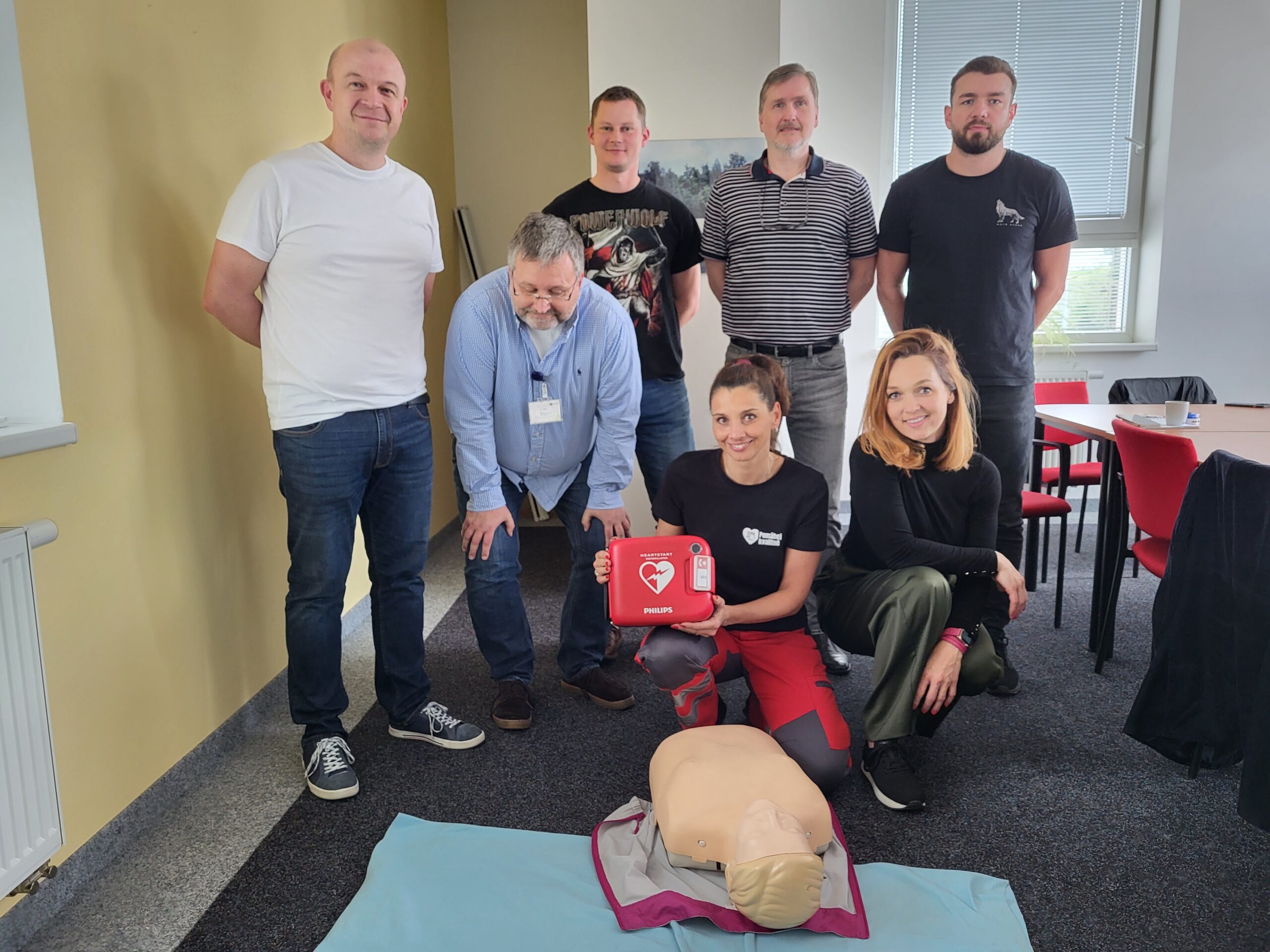Our company is constantly striving to improve the working environment and increase the safety of our employees and others on our premises. Therefore, it was decided to purchase AEDs, automatic defibrillators, for the workplace as a preventive step that can save lives. Again, it is better to be prepared than surprised.
Currently, AED units are being deployed at ten ESA Logistics sites across the Czech Republic. They will be installed in the warehouses in Ostrava, Brno, Úžice, Jažlovice DC7 and DC2, Tuchoměřice, Kladno Dubská, Kladno headquarters and at both branches in Stříbro. Simultaneously, training of employees in first aid, including demonstrations of the use of AEDs, takes place.
Heart failures are increasingly common in today’s hectic times. Some require “only” a visit to the doctor, others require the intervention of the emergency services, but unfortunately they can also be fatal. In cases of heart fibrillation, this is an interruption of heart activity where the heart goes into a tremor-like state instead of pumping blood as usual. In this case, there is a very short time to get help, as after just five minutes irreversible changes in the brain can occur due to lack of oxygen. A very effective method is the use of an automated external defibrillator (AED), which sends an electrical impulse into the affected person’s body using a controlled electrical discharge, which returns the heart from a state of fibrillation to normal ‘operation’ (i.e. defibrillates it).
An AED is a portable electronic device that can be used not only for the aforementioned defibrillation, but also for monitoring heart rhythms and dealing with serious cardiac arrhythmias. The device also helps in cardiac arrest when the heart suddenly stops beating. Unlike the defibrillators used by doctors, the AED is adapted for completely lay use.
If you are wondering whether you would be able to use an AED in an emergency, you need not worry. The device, once removed from the freely accessible metal glass box and bag, followed by pressing the green start button, takes over the control for you. It guides you by voice throughout the resuscitation, consistently telling you what to do or repeat until it knows that the required step (such as the correct placement of the electrodes on the casualty’s body) has been performed correctly. Because an electrical discharge is not always appropriate, the AED will know what state the victim’s heart function is in by evaluating the data from the electrodes on the patient’s body. It recognises whether the condition is fibrillation or not and recommends to the rescuer further appropriate action, such as indirect cardiac massage or other interventions. At the same time as using the defibrillator, it is of course important to call the emergency services immediately. The operator then advises the resuscitation until its arrival via a loudspeaker and also directs the resuscitation activity. In the bag with the AED there are also other medical supplies that can help in complicated accident cases.




